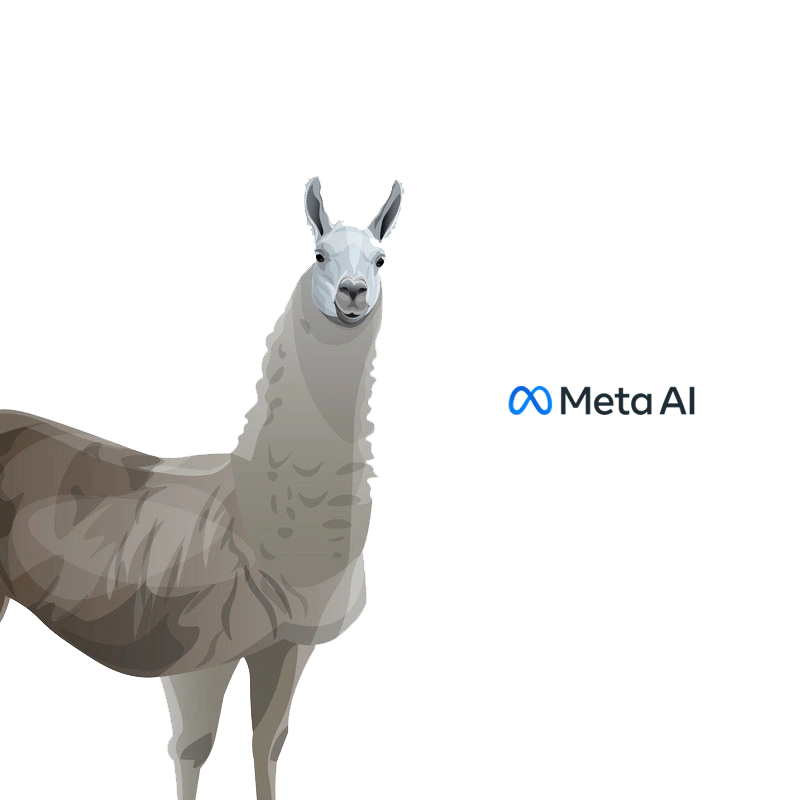
The viral sensation of OpenAI's talkative chatbot has sparked an arms race of generative AIs.
The AI field was kind of boring, and that the buzz it generated mostly happened within its own field, and rarely reach far beyond its own audience. But when OpenAI introduced ChatGPT as a AI chatbot tool, the internet was quickly captivated.
This is because the AI is able to do a wide range of tasks, and it didn't take long before the world was awed.
And when others, like Microsoft, started embedding the technology into Bing and Edge, despite with a few issues, and that even the underdog Opera wants to use it to power parts of its web browser, Google started to worry.
It was a "code red", before Google finally came up with Bard.
With others jumping into the bandwagon, Meta, the company formerly known as Facebook, is also into the game, when it announced LLaMA.
This time, the company announced 'LLaMA 2'.
We believe an open approach is the right one for the development of today's Al models.
Today, we’re releasing Llama 2, the next generation of Meta’s open source Large Language Model, available for free for research & commercial use.
Details https://t.co/vz3yw6cujk pic.twitter.com/j2bDHqiuHL— Meta AI (@MetaAI) July 18, 2023
According to Meta in a news post.
"We believe an open approach is the right one for the development of today’s AI models, especially those in the generative space where the technology is rapidly advancing."
Unlike AI systems launched by OpenAI and others, Meta is releasing LLaMA 1 and LLaMA 2 for free to both research and commercial use.
This should allow more people worldwide to build upon and improve the technology.
Meta’s CEO Mark Zuckerberg has been vocal about the importance of open-source software for stimulating innovation.
"Open-source drives innovation because it enables many more developers to build with new technology,” he said in a Facebook post.
"It also improves safety and security because when software is open, more people can scrutinize it to identify and fix potential issues."
We're not alone in this belief. We’re collaborating with a broad set of global supporters across tech, academia & policy who believe in our open approach. Llama 2 is available starting today through @Azure & @Windows, as well as @AWSCloud and @HuggingFace.
— Meta AI (@MetaAI) July 18, 2023
What's showcased in LLaMA 2 is that, it comes in three different sizes: 7 billion, 13 billion and 70 billion parameters, depending on the model users choose.
In comparison, OpenAI’s GPT-3.5 series has up to 175 billion parameters, and Google’s Bard (based on LaMDA) has 137 billion parameters.
OpenAI famously did not disclose the number of parameters in GPT-4 in its published research. The number of parameters in a model generally correlates with its performance and accuracy, but larger models require more computational resources and data to train.
While both LLaMA 1 and LLaMA 1 are smaller than rivals, LLaMA 2 is noteworthy because of using different training approach.
The tool is trained using reinforcement learning from human feedback (RLHF), learning from the preferences and ratings of human AI trainers. In contrast, ChatGPT used supervised fine-tuning, learning from labeled data provided by human annotators.
And because it's open-sourced, LLaMA 2 could democratize the rapidly advancing field of AI, providing developers with powerful tools to build innovative applications and solutions.
Innovating in the open w/ models of today’s capabilities makes responsibility more important than ever — we’re continuing to invest in responsible AI with a new Responsible Use Guide, continuous collaboration through community forums & red teaming exercises w/ third-parties.
— Meta AI (@MetaAI) July 18, 2023
But because LLaMA 2 is an open-source project, there are several ways to access it. Some of the ways include:
- Interact with the Chatbot Demo: which can be accessed by visiting llama2.ai, through a chatbot model demo hosted by Andreessen Horowitz.
- Download the LLaMA 2 Code. This allows users to run the AI on their own machine, giving them the freedom to modify the codes accordingly. Users can download the source code from Hugging Face, a leading platform for sharing AI models.
- Access through Microsoft Azure, where users can find LLaMA 2 on the Azure AI model catalog. This method is recommended for more advanced users.
It's also said that Meta is collaborating with Qualcomm to bring on-device AI with LLaMA 2 models.
By launching LLaMA 2, Meta has taken a significant step in opening up AI to developers worldwide. As developers begin to customize and build upon this new model, the world can expect to see a surge of innovative AI applications in the near future.
In the context of enterprise data, LLaMA 2 could unlock significant potential for businesses and organizations to develop custom AI solutions tailored to their specific needs.
These could range from advanced chatbots to sophisticated data analysis tools, making LLaMA 2 a powerful tool in the enterprise AI toolbox.